Yes, automatic cars do have clutches, but they operate differently than in manual vehicles.
Understanding the Basics
Clutches and manual transmissions play critical roles in how a car operates, especially when translating engine power to movement. This section will delve into their mechanisms, differences, and relevance in vehicular functionality.
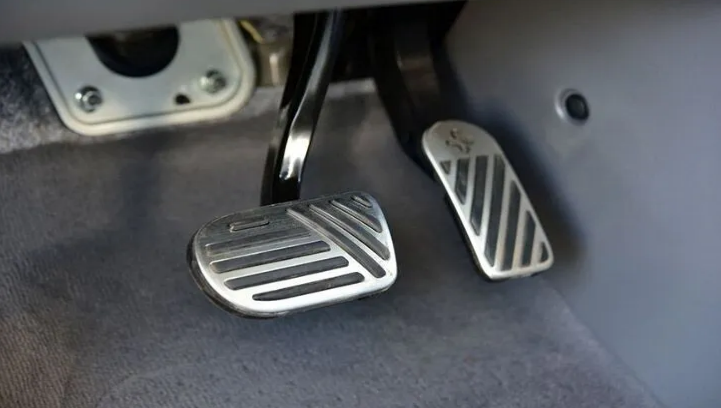
What is a Clutch?
A clutch is a mechanical device that engages and disengages the power transmission from the driving shaft to the driven shaft. In simpler terms, it connects and disconnects the engine from the wheels, allowing a smooth transition between gears.
When you press down on the clutch pedal in a manual car, it disengages the engine from the wheels. This momentarily interrupts the power flow, permitting the driver to switch gears. The main components of a clutch include:
- Friction Disc: This is the part that connects directly to the engine’s flywheel. It’s designed from a durable material that can handle constant friction and heat.
- Pressure Plate: Fixed to the flywheel, it pushes the clutch disc against the flywheel, allowing the transfer of power.
- Release Mechanism: Helps in disengaging the clutch from the flywheel. It’s usually operated by the clutch pedal.
The clutch’s quality plays a significant role in the car’s overall performance. A high-quality clutch can handle around 200,000 to 250,000 miles before needing a replacement, though this varies based on driving habits and conditions.
How a Manual Transmission Works
The manual transmission is a system that uses gears and gear ratios to convert the engine’s rotational energy into movement. It’s essential to understand that while an engine runs in a range of speeds, the wheels don’t. This is where the transmission comes in.
A manual transmission’s primary components are:
- Gears: They come in various sizes and ratios. A typical manual car may have anywhere from 4 to 6 forward gears and one reverse gear.
- Shift Lever: The driver-operated lever that selects gears. The ‘stick’ in ‘stick shift’.
- Input and Output Shafts: The input shaft is connected to the engine, while the output shaft is connected to the wheels. Gears are placed on these shafts.
- Synchronizers: These components help in smooth transitioning between gears, ensuring that there’s no grinding or damage.
When the driver selects a gear, the relevant gear ratio is engaged, translating to the required wheel speed. For example, first gear provides high torque for powerful starts but at a low speed. In contrast, the fifth or sixth gear offers low torque but lets the car travel at highway speeds efficiently.
Understanding the intricate workings of the clutch and manual transmission is crucial for those interested in the mechanics of vehicles, or for those considering purchasing a manual car. Notably, the manual transmission offers more control to the driver but might come at the cost of needing more attention, especially in traffic conditions.
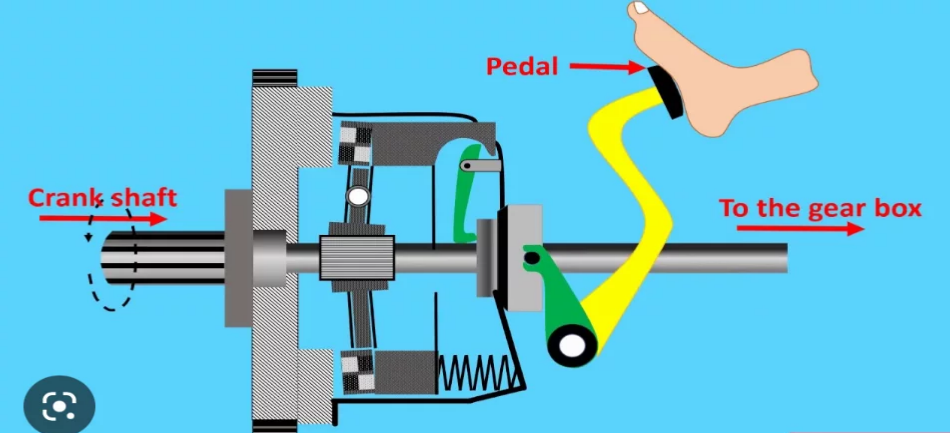
Automatic Transmission Explained
In the realm of vehicles, the automatic transmission represents a leap in convenience and adaptability. It liberates drivers from manual gear shifting, allowing more focus on the road and overall control. At the heart of this system lie a few key components, which we’ll explore in detail.
The Role of Torque Converters
A torque converter is a fluid coupling device that transfers rotating power from the engine to the transmission. Unlike a clutch, which physically connects and disconnects, the torque converter uses a special fluid to transmit power. This is why automatic cars can stop at traffic lights without stalling even while still in gear.
Inside a torque converter, there are:
- Impeller: Connected to the engine, this component spins with it, effectively pushing the transmission fluid outwards due to centrifugal force.
- Turbine: Positioned facing the impeller, the fluid forced out by the impeller hits the blades of the turbine, causing it to spin. This spinning motion is then transferred to the transmission.
- Stator: Located between the impeller and turbine, its primary role is to redirect the fluid from the turbine back to the impeller, ensuring efficient power transfer. A well-designed stator can boost the efficiency of a torque converter by up to 90%.
Torque converters play a pivotal role in determining a car’s overall performance. A high-quality torque converter can help improve the acceleration and smoothness of the car’s drive.
Planetary Gear Set and How It Works
The planetary gear set is the central gear system used in automatic transmissions. Its design allows multiple gear ratios to be achieved with a single set of gears, giving automatic transmissions their characteristic smooth gear shifts.
The planetary gear set consists of:
- Sun Gear: Located at the center, this gear is the pivot point around which the entire system revolves.
- Planet Gears: These are small gears that orbit around the sun gear. They are held together by a common carrier which allows them to revolve around the sun gear while rotating on their individual axes.
- Ring Gear: This is the outermost gear, encircling the planet gears.
Changing gears in an automatic transmission is achieved by locking any of the three main components (sun, planet carrier, or ring gear) to the transmission casing or the output shaft. This ingenious setup ensures a variety of gear ratios from a single gear set, optimizing for both power and speed.
In conclusion, the torque converter and the planetary gear set stand as the twin pillars supporting the convenience and adaptability of automatic transmissions. Their combined efficiencies make for smoother rides, minimal maintenance, and a distinct driving experience.
Comparison with Manual Transmission
The automotive world often debates the supremacy of manual versus automatic transmissions. While personal preference plays a significant role in one’s choice, understanding the technical distinctions, benefits, and drawbacks can provide clarity for potential car buyers and enthusiasts alike.
Main Differences Between Automatic and Manual Clutches
While both systems play the crucial role of connecting and disconnecting the engine from the wheels, their operational mechanics differ:
- Operation Mechanism: In a manual transmission, the clutch is a friction disc pressed against the flywheel using the clutch pedal. This physical connection requires the driver’s involvement. In contrast, automatic transmissions utilize torque converters, using fluid dynamics to transfer power, eliminating the need for a physical connection and a clutch pedal.
- Components: A manual clutch consists of components like the friction disc, pressure plate, and release mechanism. On the other hand, an automatic system’s core components are the torque converter, impeller, turbine, and stator.
- Maintenance: Manual clutches, over time, wear out due to constant physical friction and might require replacements every 60,000 to 100,000 miles, depending on the driving style. Automatic systems, though more intricate, often demand less frequent maintenance. However, their repair or replacement can be more costly, sometimes reaching upwards of $1,500 depending on the make and model.
- Control and Feedback: Manual transmissions offer direct feedback and more control over the vehicle, with the driver deciding when to change gears. Automatics, however, take over this decision-making, aiming for optimal efficiency and convenience.
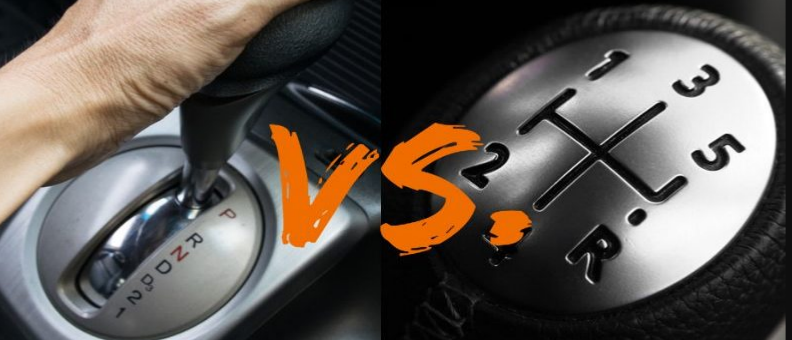
Advantages and Disadvantages of Each System
Both transmission types come with their own sets of pros and cons, which can influence one’s decision:
- Manual Transmission:
- Advantages:
- Fuel Efficiency: Manuals tend to be more fuel-efficient due to direct mechanical connections. Some report savings of up to 15% in fuel consumption.
- Cost: Manual systems are generally less expensive, both in initial purchase and long-term maintenance.
- Control: Drivers get a better feel of the vehicle, especially beneficial in challenging terrains or performance driving.
- Disadvantages:
- Convenience: Requires more effort, especially in stop-and-go traffic, which can be tiring.
- Learning Curve: New drivers often find manuals challenging, with stalling being a common issue.
- Advantages:
- Automatic Transmission:
- Advantages:
- Ease of Use: Ideal for urban environments with heavy traffic. No need to constantly shift gears.
- Safety: Allows drivers to focus more on the road.
- Versatility: Modern automatics come with manual modes, offering the best of both worlds.
- Disadvantages:
- Fuel Consumption: Tends to be slightly less fuel-efficient compared to manuals.
- Cost: Higher initial purchase price and potentially higher repair costs.
- Advantages:
In summary, while the allure of manual transmissions remains among car purists and enthusiasts, the world is steadily gravitating towards automatics due to their convenience and advancements in technology. Each type has its merits, and the choice often boils down to individual preferences and priorities.
The Presence of Clutches in Automatic Transmission
Contrary to popular belief, clutches are not exclusive to manual transmissions. They find their way into automatic systems, albeit in different forms and functionalities. These clutches play pivotal roles in ensuring smooth gear shifts, enhancing performance, and accommodating various driving conditions.
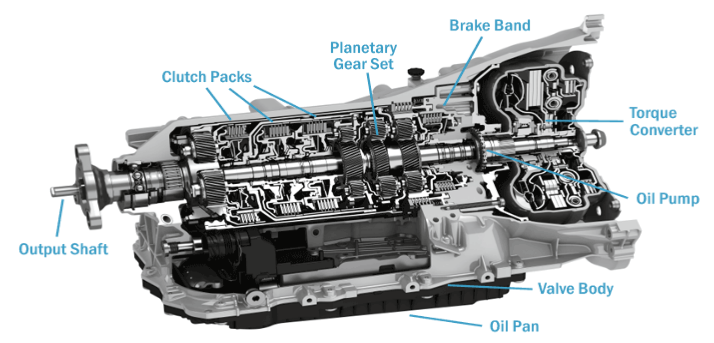
Multi-plate Clutches in Modern Automatics
Multi-plate clutches feature multiple clutch plates stacked together, allowing for more torque transmission in a compact size. These clutches are often used in high-performance vehicles and specific automatic transmission designs due to their efficiency and durability.
- Design: As the name suggests, multi-plate clutches consist of several plates. They work using hydraulic pressure, which compresses these plates together. The more the plates, the more the frictional force, and thus, greater the power transmitted.
- Function: These clutches assist in the smooth engagement and disengagement of gears. They play a significant role in automatic transmissions, especially when the system requires rapid gear changes or needs to handle high torque.
- Performance: In terms of performance, multi-plate clutches can handle power outputs up to 1,000 horsepower in some configurations. This makes them ideal for sports cars and racing applications.
- Maintenance: While they’re designed for endurance, these clutches can wear over time, especially under aggressive driving conditions. Replacement costs can range between $500 to $2,500 depending on the vehicle model and labor charges.
Dual-Clutch Automatic Transmissions
The Dual-Clutch Transmission (DCT) is a newer form of transmission that combines the best of manual and automatic systems. It employs two separate clutches for odd and even gear sets.
- Operation: One clutch controls the odd-numbered gears, while the other manages the even-numbered ones. This setup ensures that while one gear is engaged, the next is pre-selected, ready to be activated. The result is a lightning-fast shift, with some DCTs taking less than 0.01 seconds for a gear change.
- Advantages:
- Speed: DCTs offer rapid gear changes, enhancing acceleration and overall performance.
- Fuel Efficiency: Their design can lead to better fuel efficiency compared to traditional automatics, sometimes improving consumption by up to 10%.
- Driver Engagement: Some DCTs come with manual modes, allowing drivers a more hands-on experience.
- Disadvantages:
- Complexity: DCTs are intricate systems. Maintenance or repair, when needed, can be expensive, sometimes reaching up to $3,000 or more.
- Smoothness: In certain driving scenarios, especially at low speeds, DCTs might not be as smooth as conventional automatics.
For those interested in a deep dive into DCTs, here’s a comprehensive resource.
In conclusion, while the traditional clutch pedal and singular disc might be absent in automatic transmissions, clutches in varied forms still play a significant role in these systems. Their adaptations in automatics showcase the auto industry’s innovations, meeting the demands of modern-day driving.

Evolution of Automatic Transmission
Automatic transmissions have undergone a fascinating journey from their inception to today’s technologically advanced systems. These self-shifting gearboxes have evolved in response to changing consumer demands, technological breakthroughs, and a desire for greater efficiency and performance.
From Hydramatic to Modern-day Systems
The journey of automatic transmissions started with the introduction of the Hydramatic by General Motors in the 1930s. This system set the foundation for the auto world’s shift towards more user-friendly driving experiences.
- Hydramatic Era: The Hydramatic was the first mass-produced fully automatic transmission. It was a 4-speed system that used fluid coupling and multiple planetary gearsets. Introduced in 1939, by 1950 over a million vehicles had been equipped with this system. The selling point was its ease of use and improved efficiency compared to earlier semi-automatics.
- Torque Converter Era: As technology progressed, the fluid coupling in the Hydramatic got replaced by the torque converter in many automatic transmissions. This device allowed for smoother starts and enhanced torque multiplication, making the driving experience even more seamless.
- Electronic Controls: The 1980s and 1990s saw the introduction of electronic controls in transmissions. Computers began to take charge of gear selection, ensuring optimal performance and fuel consumption. These systems could adapt to driving styles and conditions, providing an unmatched blend of performance and efficiency.
- Continuously Variable Transmissions (CVT): The CVT represents a departure from fixed gear ratios. Using belts and pulleys, these transmissions can alter their output continuously, ensuring the engine operates at its most efficient RPM. This results in improved fuel efficiency, sometimes by as much as 20%.
The Shift towards More Efficient Transmissions
In the face of rising fuel prices and environmental concerns, there’s been a clear trend towards making transmissions more efficient.
- More Gears: Modern automatics now frequently boast 8, 9, or even 10-speed gearboxes. More gears mean the engine can run closer to its optimal efficiency at a wider range of speeds. This can result in a 5-15% improvement in fuel efficiency compared to older 4 or 5-speed systems.
- Dual-Clutch Systems: As discussed earlier, Dual-Clutch Transmissions (DCT) blend the characteristics of manuals and automatics. By pre-selecting the next gear, they ensure rapid shifts and reduced power loss, enhancing both performance and efficiency.
- Adaptive Systems: Modern transmissions can “learn” and adapt to a driver’s style, optimizing shifts for either performance or efficiency. For instance, if a driver tends to accelerate aggressively, the system might prioritize quicker shifts at higher RPMs.
- Hybrids and Electrification: With the rise of electric vehicles (EVs) and hybrid systems, traditional automatic transmissions are seeing transformations. While pure EVs might not use a traditional gearbox, hybrids often employ specially designed automatics to integrate electric and internal combustion power seamlessly.
In wrapping up, the trajectory of automatic transmission evolution is a testament to the automotive industry’s continual strive for perfection. From the rudimentary systems of yesteryears to today’s technological marvels, automatic transmissions have come a long way, making driving accessible and enjoyable to the masses. Their journey, shaped by both innovation and necessity, stands as a beacon for what lies ahead in the realm of mobility.
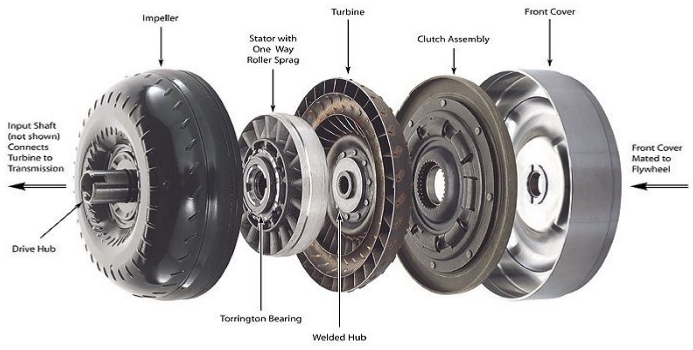
Common Misconceptions
Despite the widespread use of automatic transmissions in today’s vehicles, there remains a series of myths and misunderstandings about how they function. These misconceptions often stem from older technology, generalizations, or simple misinformation.
Debunking Myths around Automatic Transmissions
- “Automatics are Less Fuel Efficient than Manuals”: While this may have been true decades ago, advancements in transmission technology have significantly closed the gap. Modern automatics, especially those with higher gear counts and adaptive systems, can sometimes outperform manuals in terms of fuel efficiency. For instance, a modern 8-speed automatic can improve fuel efficiency by up to 15% compared to its older 4-speed counterpart.
- “Automatics are More Expensive to Repair”: Repair costs depend on various factors, including the make, model, and the specific issue at hand. However, with the advent of electronic controls and better materials, many automatics are designed to last longer without needing major repairs. On the flip side, if a repair is necessary, certain components can be pricier due to their complexity. But this doesn’t necessarily mean that the overall maintenance cost over the vehicle’s lifetime will be higher.
- “Automatics Aren’t Suitable for Performance Driving”: This myth is easily dispelled with the rise of supercars and sports cars employing automatic or dual-clutch systems. These transmissions can shift faster than even the most skilled driver, optimizing performance. For example, some DCTs can shift gears in less than 0.01 seconds, ensuring optimal power delivery.
- “Automatics Don’t Offer Driver Engagement”: While manuals do provide a hands-on driving experience, many modern automatics offer manual modes, often with paddle shifters, allowing drivers to select gears manually without a clutch pedal. This feature provides a balance between convenience and engagement.
Why Some Believe Automatics Don’t Have a Clutch
The belief that automatic transmissions don’t contain a clutch often stems from the absence of a clutch pedal in vehicles with automatic systems. However, the truth is a bit more nuanced.
- Role of the Torque Converter: Traditional automatics use a torque converter instead of a clutch. The torque converter serves a similar purpose, allowing the engine to keep running even when the vehicle is stationary. It uses fluid dynamics to transfer power, eliminating the need for a direct mechanical connection between the engine and transmission.
- Presence of Clutches: Even in the absence of a clutch pedal, many automatic transmissions, especially modern ones like DCTs, utilize clutches. As we discussed earlier, a DCT employs two clutches to manage gear changes.
- Evolution of Terminology: The term “clutch” is often associated with the act of manually engaging and disengaging gears. Since automatics handle this process… well, automatically, many assume that there’s no clutch involved.
In sum, while the automatic transmission landscape has seen considerable advancements, myths and misconceptions persist. However, with a bit of knowledge and understanding, one can appreciate the engineering marvels these systems truly are, while debunking the myths that surround them.
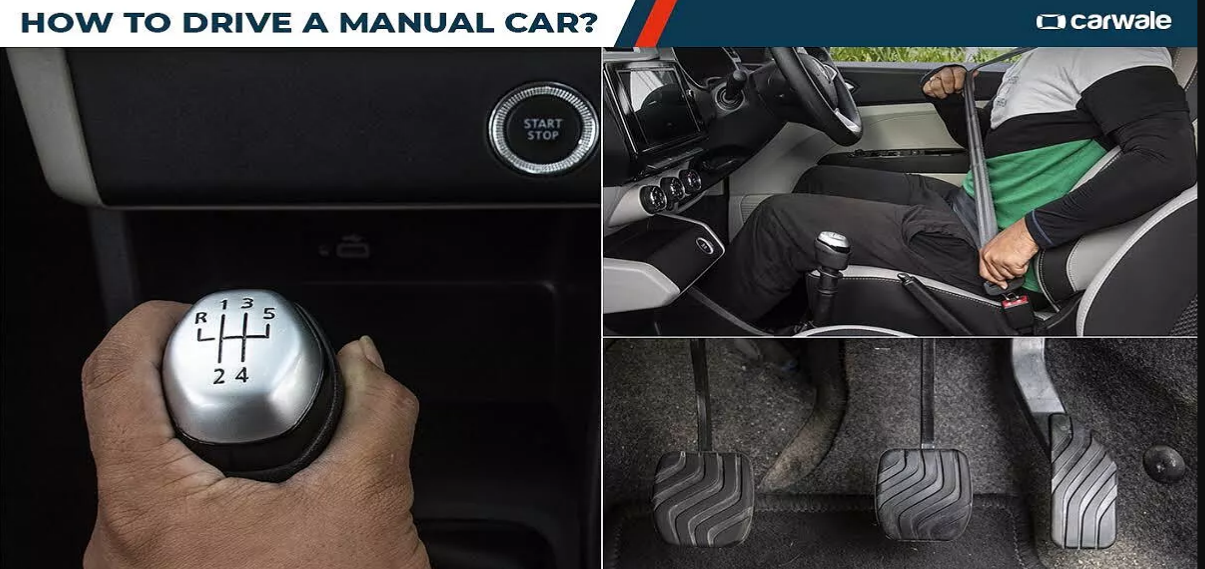
Conclusion
The ever-evolving world of automatic transmissions is a testament to how technology and engineering can come together to refine and redefine the way we drive. As we look back at the historical trajectory and current state of automatic transmissions, it becomes clear that these systems are not just about convenience but are at the heart of driving innovation, efficiency, and performance.
Key Takeaways
- Historical Evolution: From the rudimentary Hydramatic system introduced in the 1930s to today’s sophisticated 10-speed and dual-clutch transmissions, automatic systems have undergone significant transformations.
- Efficiency & Performance: Modern automatics often rival or even surpass their manual counterparts in terms of fuel efficiency and performance. For instance, the latest 9-speed automatics have been shown to improve fuel efficiency by up to 10% compared to older 5-speed models.
- Presence of Clutches: Contrary to popular belief, many automatic transmissions, like the DCTs, do utilize clutches, even if there isn’t a clutch pedal present in the vehicle.
- Cost & Repairability: Although certain components in modern automatic transmissions might have higher individual costs, their enhanced durability and lifespan can offset these expenses over time.
- The Myths: While misconceptions surrounding automatic transmissions persist, understanding their mechanics, designs, and evolution can help in debunking these myths.
The Future of Automatic Transmissions
- Integration with Electric Vehicles (EVs): As the automotive world shifts towards electric propulsion, the role of traditional transmissions is poised for change. Some EVs forgo transmissions altogether, while others might use simpler single-speed transmissions. However, the efficiency benefits of multi-speed transmissions are being explored even for EVs.
- Smart & Adaptive Systems: With the integration of AI and advanced sensors, future automatic transmissions might be able to “learn” and adapt to individual driving styles, ensuring optimal performance and efficiency tailored to each driver.
- Material Innovations: The search for lighter, more durable materials could lead to transmissions that are both more efficient and have extended lifespans. With material science progressing rapidly, we might see transmissions built with advanced polymers or even graphene-infused components.
- Cost-Efficiency: As production scales up and technology becomes more widespread, the overall cost of advanced automatic transmissions is likely to decrease, making them accessible to a broader range of vehicles and markets.
In wrapping up, the trajectory of automatic transmissions is a clear indication of the marvels of automotive engineering. The synthesis of mechanics, electronics, and smart systems promises an exciting road ahead for the world of automatic transmissions.
